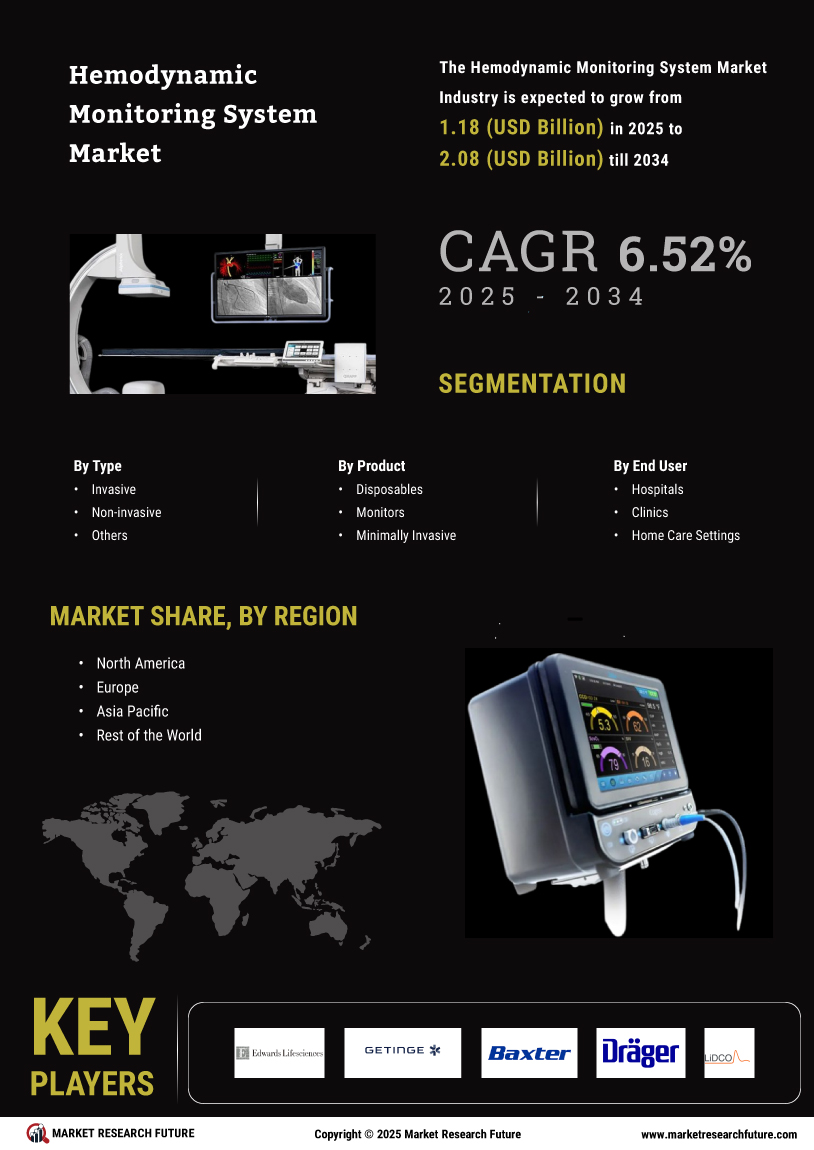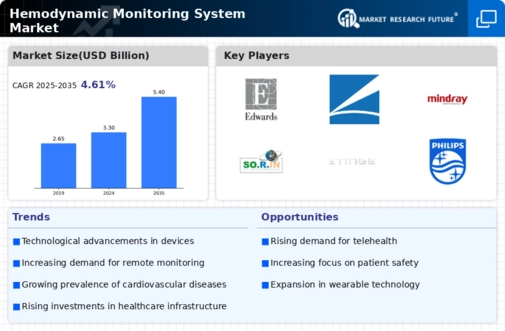The Hemodynamic Monitoring System Market has been experiencing significant transformation driven by advancements in technology, increasing prevalence of cardiovascular diseases, and an expanding aging population. As the need for precise monitoring of blood flow, pressure, and other critical cardiovascular parameters rises, various industry players are investing heavily in research and development to enhance their offerings. This competitive landscape is characterized by a mix of established companies and emerging players that are leveraging innovative technologies such as non-invasive monitoring solutions, advanced data analytics, and integrated systems to provide comprehensive monitoring solutions.
As healthcare systems around the world continually seek efficiency and improved patient outcomes, the competition within this market remains fierce, prompting companies to refine their strategies and enhance collaboration with healthcare professionals.
Edwards Lifesciences stands out in the Hemodynamic Monitoring System Market with a strong focus on innovative solutions that cater to the evolving needs of healthcare providers. The company is renowned for its advanced technologies in pressure monitoring and vascular access, which have solidified its place as a leader in the industry. Edwards Lifesciences has established a broad market presence by strategically targeting heart valve solutions and hemodynamic monitoring devices that deliver high accuracy and reliability in critical care settings.
The strengths of Edwards Lifesciences lie in its commitment to clinical research, robust product portfolio, and an established reputation within the medical community for delivering quality and effective monitoring solutions that have improved patient care.
Nihon Kohden, on the other hand, holds a significant position in the Hemodynamic Monitoring System Market through its diverse range of monitoring devices, including multifunctional monitors and advanced hemodynamic parameters assessment tools. The company has made considerable advancements in technological developments, leading to its strong market presence in various regions. Nihon Kohden's strengths include its ongoing commitment to innovation, evident through its significant investments in research and development. Furthermore, the company has strategically pursued mergers and acquisitions to broaden its product offerings and geographical reach, enhancing its competitive edge in the market.
With a focus on delivering high-quality medical devices that are tailored to the unique needs of healthcare facilities globally, Nihon Kohden continues to solidify its role as a key player in the hemodynamic monitoring segment, reinforcing its status amid evolving healthcare demands.



















Leave a Comment